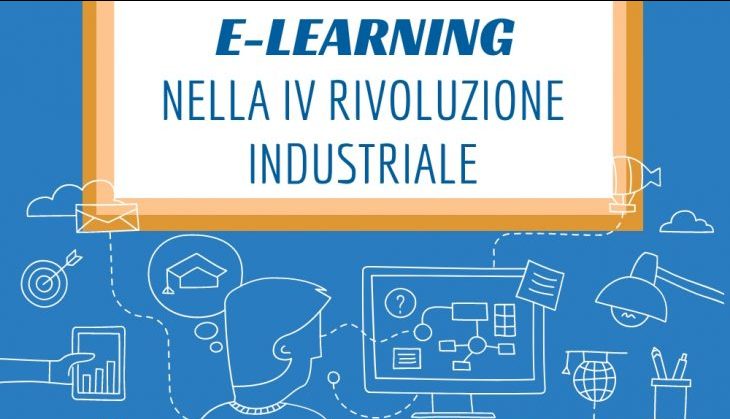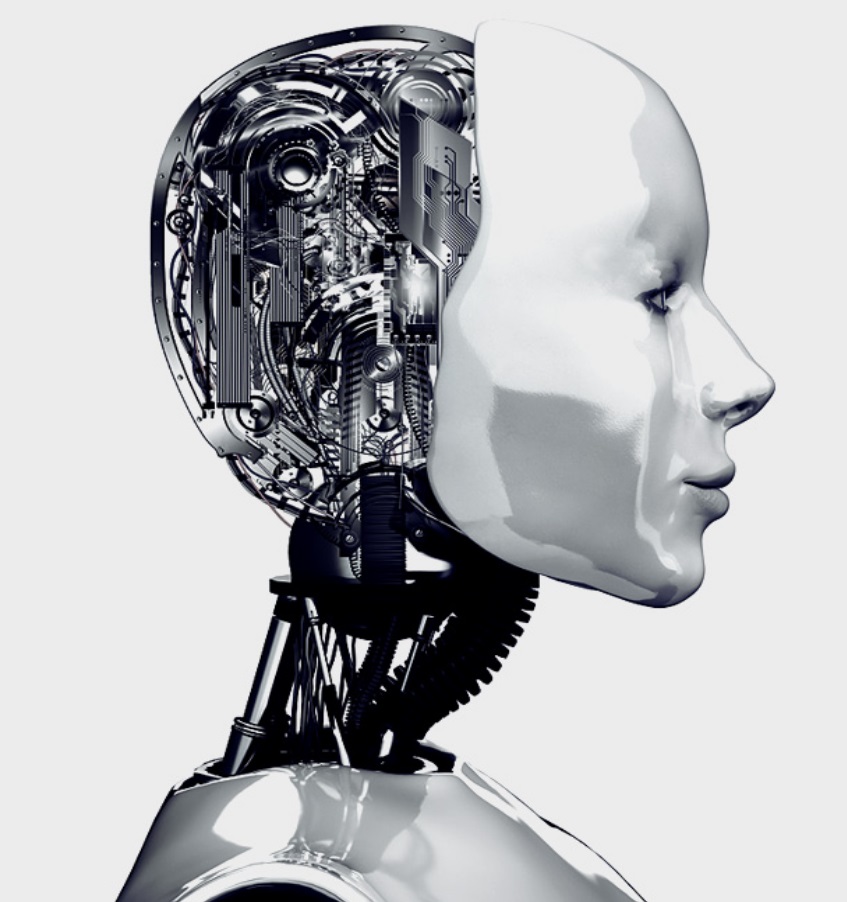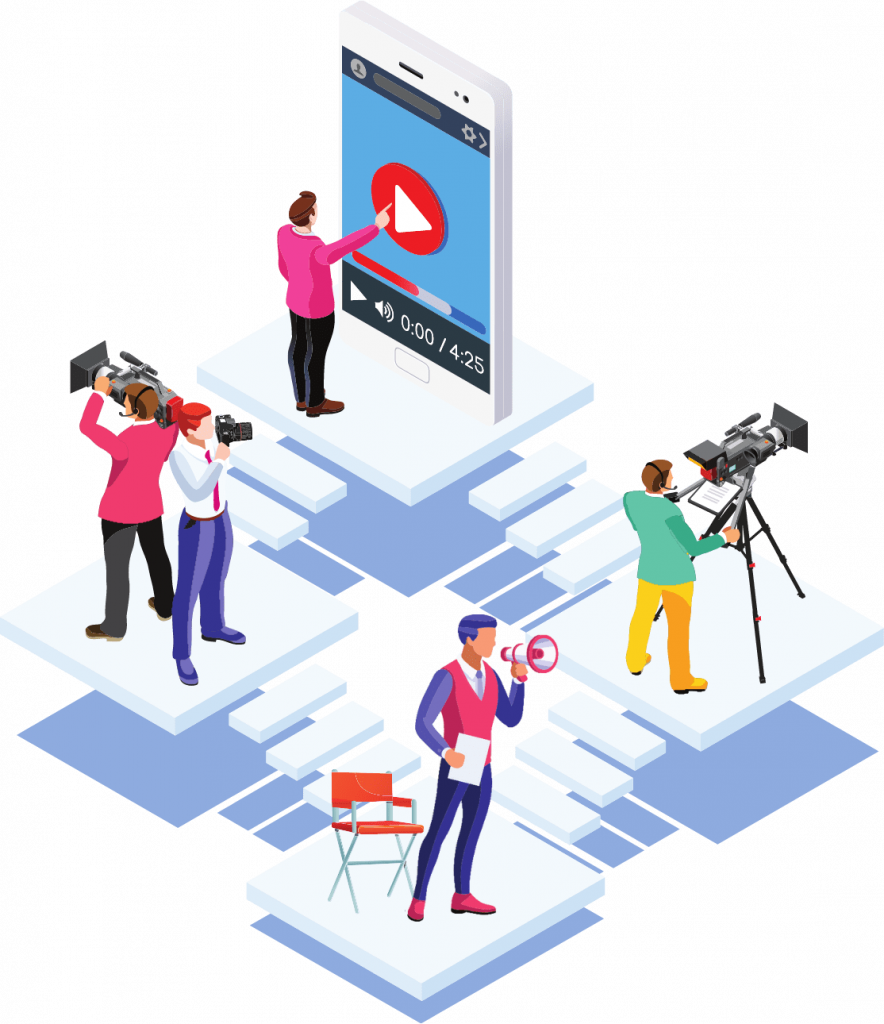
E-learning in the IV industrial revolution
Industry 4.0 is growing dramatically. It's the age of the internet of things, where we dialogue more and more with our washing machines, and cars will soon take us to work with a simple vocal request. Our own clothes will soon be connected and will provide us with appropriate indications on things to do or on the next weather forecast. Artificial Intelligence (AI) will soon replace itself, or rather, it will become more and more alongside what was once necessarily called a work proper to man. Someone sees the phenomenon enthusiastically, someone else much less.
 A growing society needs to face and solve problems that it generates and determines. Within what is defined, without exaggeration, the IVarevolution industrial, where the growth of things, people and ideas runs on tracks of continuous progression on a geometric scale, one of the problems that companies frequently encounter, to guarantee themselves and their products and services over time, is the need to continuous training of people who work and work synergistically within them. If continuing education is a problem, e-learning is his solution natural. The training of people does not end, unlike what happened in previous eras. This problem, internal and pressing in companies that produce goods or services, implies specific and targeted work in companies that deal with training, to find effective e-learning solutions and of high didactic and formative quality. These solutions must be able to meet the training needs of the company, giving life to projects whose effects can be correctly assessed and measured. This commitment, central in the mission of training companies, allows you to build agile, engaging and meaningful teaching experiences for the companies that use them and, last but not least, for the same people who make direct use of them.
A growing society needs to face and solve problems that it generates and determines. Within what is defined, without exaggeration, the IVarevolution industrial, where the growth of things, people and ideas runs on tracks of continuous progression on a geometric scale, one of the problems that companies frequently encounter, to guarantee themselves and their products and services over time, is the need to continuous training of people who work and work synergistically within them. If continuing education is a problem, e-learning is his solution natural. The training of people does not end, unlike what happened in previous eras. This problem, internal and pressing in companies that produce goods or services, implies specific and targeted work in companies that deal with training, to find effective e-learning solutions and of high didactic and formative quality. These solutions must be able to meet the training needs of the company, giving life to projects whose effects can be correctly assessed and measured. This commitment, central in the mission of training companies, allows you to build agile, engaging and meaningful teaching experiences for the companies that use them and, last but not least, for the same people who make direct use of them.
The ancient Greek culture, before being surpassed by the Judeo-Christian tradition which permeates our thought, our ideas and actions, possessed a learned and refined language that expressed words according to the emotions and ideas that they themselves generate. Words that indicate areas where human action has no access, Galimberti teaches us, generate anguish, and are indicated with guttural expressions, which vocally externalize the anguish itself. Words where the action of man is possible are not anxious and are indicated with lip or liquid expressions. Domestic fire, governed by man, is indicated by the word piur (hence pyromaniac) in the labial; lightning, which generates anguish and cannot be governed by human action, is indicated by gùgnos, guttural. The enigma, which has no accessible solutions, is a guttural word, while problem, which has a logical solution within itself, is labial, it does not cause anguish. A problem is, in Greek thought, an obstacle but also a form of protection.
 In the same way we must face the endless training to which we are all subjected, because it is not an enigmatic condition, solvable only with the acute and formidable intuition of Oedipus in front of the Sphinx, but a problematic situation, which has within it a solution through our attention and action. What is a problem has its solution, and it also constitutes a condition of opportunity. The e-learning opportunity-solution.
In the same way we must face the endless training to which we are all subjected, because it is not an enigmatic condition, solvable only with the acute and formidable intuition of Oedipus in front of the Sphinx, but a problematic situation, which has within it a solution through our attention and action. What is a problem has its solution, and it also constitutes a condition of opportunity. The e-learning opportunity-solution.
Continuing education is a problem, and as such it must be solved by giving life to the analysis of the conditions that determine it and putting in place the positive responses it needs, since pre-packaged answers cannot exist, but every answer must be thought of and built, to be effective, in close relationship with its context and the objectives that we intend to achieve.
The final recipients of the training projects are, at the same time, the companies and people to whom they are addressed.
One of the problems of andragogy and continuous training is within the people themselves who, when they are adults, often express a riotousness and a resistance to learningthanks to the inexact belief that they have already achieved the highest level of necessary and possible learning in previous education, degree and diploma. This is a false belief that we must get rid of and instead place ourselves in a positive disposition moved by our own Curiosity, which is the best gas for each itinerary. Degree and diploma are not in fact the arrival point of education, but, today more than ever, the first step of research and growth that are destined to continue over time in the best possible way. You have an alphabet, in relation to your training certificate of origin, but you have to build the logos. The work has yet to be written, and it is done in our daily work within the companies in which we operate. In order for all this to translate into a positive path for the user and the company, a single company and in collaboration with training companies must build a active route capable of facilitating the continuous growth of people. This is not without its difficulties, which can only be overcome with a corporate culture capable of promoting and supporting the necessary growth process centered on people.
E-learning solutions
 La e-learning solution has gained a lot in this area, making it accessible, accessible and pleasant for an ever increasing number of people. It has internal strategies and methodologies, audio, video, interaction, which allow you to severely limit this type of initial resistance, facilitating fruition courses with attractive, pleasant formats, and the fruition itself takes place through tools that we use every day in everyday life, our pc, or mobile phone, or tablet.
La e-learning solution has gained a lot in this area, making it accessible, accessible and pleasant for an ever increasing number of people. It has internal strategies and methodologies, audio, video, interaction, which allow you to severely limit this type of initial resistance, facilitating fruition courses with attractive, pleasant formats, and the fruition itself takes place through tools that we use every day in everyday life, our pc, or mobile phone, or tablet.
For example one of the interesting training trends of the moment, the Gamification, is addressed to the same type of problem, translating learning into playful ways that produce pleasure in themselves, do not generate fatigue, and at the same time solicit cognitive, emotional, visual and participatory attention from the person taking the course. A good e-learning, to be an effective solution, must be at the same time business tool, measurable in the paths and in the results, but also enjoyable and easily usable tool of the end user, proposing a path that must be agile, simplified in its complexity, and endowed with meaning on an educational and cognitive level and on the relational one.
What is grafted at this precise moment, fruitful in research, is the meeting between the constant and rich research related to artificial intelligence (AI), and e-learning, which is nothing more than its direct and immediate application . It is precisely within Digital Learning, i.e. what is now called Distance Learning (by changing names and little content), that AI comes into play bringing significant improvements in what is the didactic experience of the people directly involved as users / learners.
The current research is, at this moment, strongly directed towards the continuous exploration of new methods and new techniques for the construction of machines that are capable of getting closer and closer to skills capable of 'emulating' behaviors such as data analysis, reasoning, and decision-making, previously exclusively for men.
In truth, we are still fortunately far from machines capable of deciding actions independently of human will, as Asimov's prodigious fantasy imagined them, where intelligent machines, in fact, had to be designed according to the rigid and indispensable three laws of robotics, necessary for guarantee a positive relationship between the intelligence of the machine and the human one, albeit in a still exclusively fantastic terrain.
Some researchers, not without reason, prefer the term Augmented Intelligence to the term Artificial Intelligence, where it is semantically evident that AI works in direct support of man and not in his replacement, greatly increasing the possibilities of choices. effective in a complex world.
 We all know pleasant applications such as Alexa, Siri, or Ok Google, coming from AI technologies, which make our search pleasant and fast, and fully satisfy both our requests and needs, and our own 'relationship' with our device in use, which behaves towards us amicably and quickly, as if we were talking to an old friend. None of these applications is actually able to make a decision in our place, in full autonomy, if anything, instead, by providing the requested information, they significantly improve our ability to take good decisions, creating a direct, immediate and effective bridge with the collective memory of society: the Internet. Augmented Intelligence does not imitate our mind, as it deceptively leads us to think about the clarity, speed and pleasantness of the possible voice dialogue, but it supports it, that is, it amplifies it and, in a nutshell, the makes it better.
We all know pleasant applications such as Alexa, Siri, or Ok Google, coming from AI technologies, which make our search pleasant and fast, and fully satisfy both our requests and needs, and our own 'relationship' with our device in use, which behaves towards us amicably and quickly, as if we were talking to an old friend. None of these applications is actually able to make a decision in our place, in full autonomy, if anything, instead, by providing the requested information, they significantly improve our ability to take good decisions, creating a direct, immediate and effective bridge with the collective memory of society: the Internet. Augmented Intelligence does not imitate our mind, as it deceptively leads us to think about the clarity, speed and pleasantness of the possible voice dialogue, but it supports it, that is, it amplifies it and, in a nutshell, the makes it better.
In the same way, the new direction in the practice and application of AI in the field of Learning & Development clearly emerges: where it arises not as a form of substitute intelligence, but as an element that acts instead in the direction of support intelligence, in fields where it surely has no equal, like the data collectingand data analysis. A programmed intelligence and a prodigious memory capable of providing an indispensable support to man, not to replace him but to help and support him, are an ideal path that is proposed as a privileged itinerary to build effective, pleasant teaching experiences and capable of leaving in the user experience of learning equipped with sthickness and meaning.
The construction of educational experiences supported by intelligent tutors, capable of providing personalized suggestions, friendly approaches (chatbot evolved), to build individual educational courses, and to provide both the possibility of quick and clear reviews of certain educational contents, are elements on which AI is working effectively to make more and more positive individual didactic experiences. In the end, no one would do without the constant, reliable and friendly help of a comfortable and nice Bot that, with an affable and never rude tone, performs the function of reminder and follows him in his personal training course, ready to provide, where needed, the teaching material necessary and useful for the completion of the teaching course.
This is the path, fruitful and full of interests, of our changing era.

